What Influences Your Accessory Purchase? Have you ever wondered what drives us to choose certain accessories over others? Is it the latest trend seen on a celebrity, a discount too good to pass up, or perhaps a recommendation from a friend?
Table of Contents
Final results of the poll
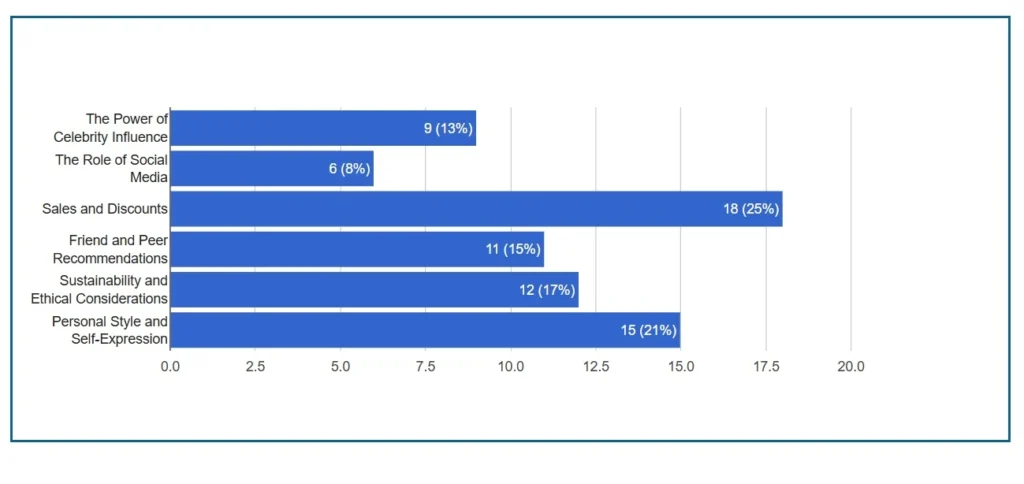
The Power of Celebrity Influence
Trendsetters in Fashion
When it comes to fashion, celebrities hold immense power. Whether it’s a pair of oversized sunglasses spotted on a Hollywood star or a signature handbag carried by a pop icon, celebrity influence on fashion accessories is undeniable. In an age where media is consumed 24/7, celebrities often set the stage for what becomes the next big trend—and their choices influence what we buy.
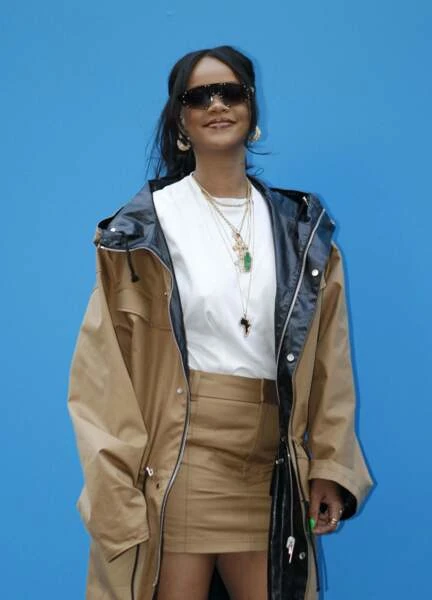
Celebrity Endorsements and Collaborations
Celebrities aren’t just wearing the latest accessories; many collaborate with fashion brands to create their lines. Think of how Rihanna’s Fenty collaboration revolutionized beauty and fashion, or Kim Kardashian’s SKIMS brand made shapewear stylish and cool. When a celebrity puts their name behind a product, it carries a sense of trust and credibility, making fans eager to buy into their vision.
Red Carpet to Real Life: Aspiration Meets Accessibility
Another critical aspect of celebrity influence is how their glamorous red carpet moments translate into everyday life. While high-end designer pieces may seem unattainable for many, the allure of celebrity-endorsed items creates a strong sense of aspiration. Fashion brands recognize this and are often “inspired by” or more affordable versions of these accessories. For example, a bold statement necklace worn at the Oscars might be followed by high-street brands releasing their more budget-friendly versions, ensuring that the trend trickles down to the masses.
The Role of Social Media
Instagram, TikTok, and Pinterest: The Modern Fashion Show
Social media has completely revolutionized how we discover and shop for fashion accessories. Platforms like Instagram, TikTok, and Pinterest have become the new runways—accessible, constantly updated, and driven by real people, influencers, and celebrities alike. For fashion enthusiasts, these platforms are not just places to scroll for entertainment; they’ve become essential for staying on top of trends and finding style inspiration.
But how exactly do these platforms influence what we add to our carts and ultimately wear?
The Rise of Influencers: Style Inspiration at Your Fingertips
In the past, fashion trends were dictated by a small group of elite designers, fashion magazines, and celebrities. Today, the landscape has changed drastically with the rise of social media influencers. These influencers, from micro-influencers with niche audiences to mega-influencers with millions of followers, have significant power in shaping our fashion choices.
Hashtags and Trends: Making Accessories Go Viral
One key element of social media’s influence on accessory purchases is the viral nature of trends. Hashtags like #OOTD (Outfit of the Day) or #AccessoryGoals help certain items gain visibility quickly. A new pair of geometric earrings or a colorful scarf can spread like wildfire once influencers, brands, and everyday users start tagging their posts.
Remember the viral #armcandy trend? It began with influencers and celebrities stacking multiple bracelets, bangles, and watches, creating a visually appealing “stacked” wrist look. The trend caught on so quickly that people started posting their takes, leading to brands promoting stackable accessories and watches to meet the demand.
Similarly, TikTok’s “For You” page can make a specific accessory go viral overnight. Users post short videos styling a particular item in different ways, often accompanied by catchy music and clever editing, sparking an instant trend that millions can see, copy, and buy into.
Pinterest: Your Lookbook
While fast, real-time trends drive Instagram and TikTok, Pinterest offers a more curated and long-lasting influence on accessory purchases. Often referred to as a “visual search engine,” Pinterest allows users to create mood boards and save accessory ideas that align with their style or upcoming events. Users pin images of jewelry, bags, or scarves they like, building a digital lookbook they can refer back to when shopping.
The Power of FOMO (Fear of Missing Out)
Social media also taps into the psychology of FOMO—Fear of Missing Out—which heavily influences buying. When users see others posting about limited-edition accessories or exclusive drops, it creates a sense of urgency. Suppose an influencer is raving about a particular necklace or bag about to sell out. In that case, followers will likely feel pressured to act quickly to avoid missing the opportunity.
Sales and Discounts
The Psychology of Discounts: Why We Can’t Resist
There’s a reason why people are drawn to sales, and it’s more than just the prospect of saving money. Sales tap into several psychological triggers that make them irresistible:
- Fear of Missing Out (FOMO): Sales often feel urgent, especially when phrases like “limited time only” or “while supplies last” are used. The idea that you might miss out on a good deal triggers FOMO, a powerful motivator for purchasing. Even if you weren’t actively looking for a new necklace or pair of sunglasses, the fear of missing out on a grand bargain might make you take the plunge.
- Perceived Value: When marked down, an accessory creates a perception of increased value. You feel like you’re getting more for your money, even if you didn’t need the item in the first place. A pair of designer earrings that were once out of your price range suddenly becomes attainable simply because it’s on sale.
- Anchoring Effect: Sales often rely on the anchoring effect, where the original price serves as a reference point, making the discounted price seem like a steal. If a handbag was originally $200 but is now marked down to $120, the buyer feels like they’re getting a significant deal—even if they wouldn’t have considered buying the bag at its original price. The discount makes it feel like the opportunity is too good to pass up.
Seasonal Sales: Key Times for Accessory Shoppers
Throughout the year, there are certain sales seasons that fashion lovers eagerly anticipate. These seasonal sales often coincide with significant shopping holidays or the change of seasons, creating a perfect storm for fashion accessory purchases. Some of the most notable sales periods include:
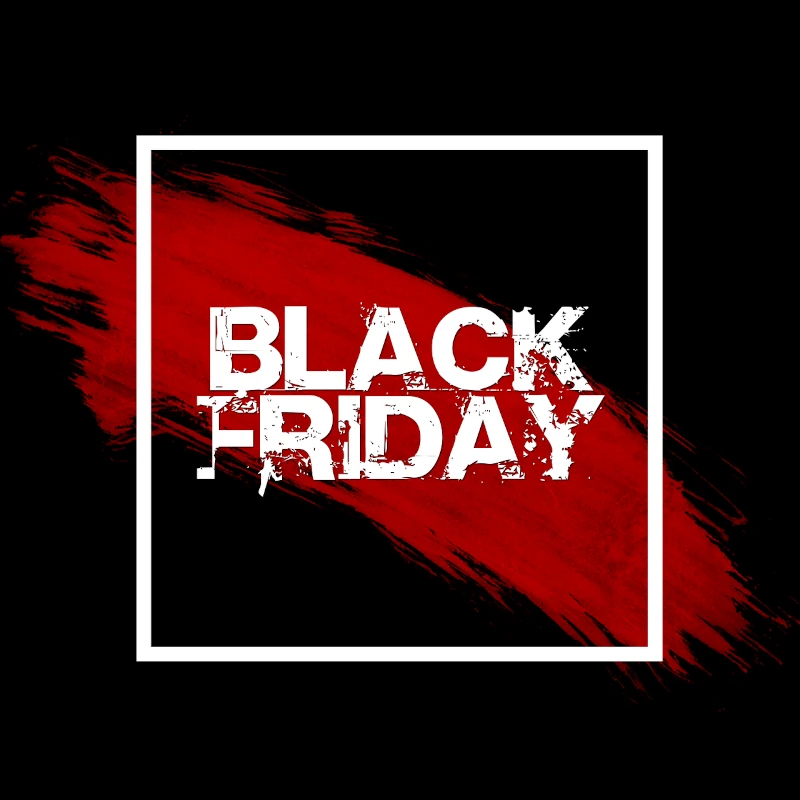
- Black Friday and Cyber Monday: These two shopping events have become synonymous with deep discounts, and fashion accessories are no exception. Brands offer irresistible deals on everything from statement necklaces to luxury handbags, often encouraging shoppers to buy early for the holiday season. The limited-time nature of these sales amplifies the urgency, pushing customers to make quick decisions.
- End-of-Season Sales: As fashion seasons transition, stores look to clear out inventory to make way for new collections. This means significant discounts on accessories that were once full-price. For many shoppers, this is the perfect opportunity to snag trendy pieces they hesitated to buy earlier in the season. Whether it’s a pair of sunglasses at the end of summer or scarves and gloves at the close of winter, end-of-season sales present an opportunity to stock up on accessories at a fraction of the cost.
- Holiday Sales: Many brands offer themed sales around holidays from Valentine’s Day to Christmas. These promotions often encourage gift-giving, positioning accessories as the perfect present for a loved one—or even a treat for yourself. Jewelry brands, in particular, capitalize on this during occasions like Mother’s Day, offering discounts on necklaces, bracelets, and rings to mark the celebration.
- Flash Sales: Flash sales are short, surprise events that usually last a few hours or a day. They’re designed to create a sense of urgency, enticing customers to act fast before the deal disappears. Brands may advertise flash sales through their social media channels or newsletters, encouraging loyal customers to pounce on the limited-time offers. These sales are particularly effective because they trigger immediate decision-making without giving the customer much time to reconsider.
The Power of Loyalty Programs and Exclusive Discounts
In addition to seasonal sales, many brands use loyalty programs to offer exclusive discounts to their most devoted customers. These programs often work by rewarding points for purchases, which can later be redeemed for discounts on future buys. Loyalty members may also get early access to sales or exclusive deals unavailable to the general public.
These programs work because they give customers a sense of being valued, reinforcing brand loyalty. When customers receive a 15% discount code for their birthday or get early access to a limited-edition jewelry line, they feel appreciated, which deepens their connection to the brand. The result is a higher likelihood of repeat purchases and more robust brand advocacy.
Clearance Sections and Outlet Shopping: Hidden Gems
For many shoppers, the thrill of finding a great accessory at a steep discount extends beyond sales events to clearance sections and outlet stores. These areas of a store or website often feature deeply discounted items that are no longer part of the current collection, offering a chance to score high-quality accessories at a fraction of the price.
Sustainable Shopping: The New Deal Hunter
In recent years, a new trend has emerged within the realm of sales and discounts—sustainable shopping. Consumers have become more eco-conscious, and brands offer discounts on items made from sustainable or ethically sourced materials. Some companies even offer discounts in exchange for recycling old accessories, promoting a more sustainable approach to fashion consumption.
Personal Style and Trends
- Balancing Personal Style with Fashion Trends
- Fashion trends come and go, but personal style evolves and remains uniquely yours. When choosing accessories, many consumers find themselves in a constant balancing act—following the latest trends while staying true to their style. So, how do personal style and trends intersect, and how do they influence our accessory purchases?
- Defining Personal Style: A Reflection of Individuality
- Personal style is more than just how you dress—it reflects your identity. Various factors shape it, such as cultural background, lifestyle, and professional environment. Some people gravitate toward minimalist, understated accessories, while others prefer bold, statement pieces that make them stand out.
- The Influence of Fashion Trends: From Runways to Real-Life
- While personal style plays a crucial role in accessory purchases, fashion trends are equally influential—especially when those trends align with current culture and societal values. From oversized sunglasses in the ’70s to the resurgence of scrunchies in recent years, trends give people new ways to experiment with their looks.
- Social Media’s Role in Trend Adoption
- Thanks to social media, trends spread faster than ever in today’s world. Platforms like Instagram, TikTok, and Pinterest constantly showcase the newest accessory trends, with influencers and fashion bloggers often leading the charge. This instant access to the latest trends makes it easier for consumers to discover, adopt, and adapt them to their style.
- Blending Trends with Personal Style: A Thoughtful Approach
- While trends can be exciting, not all will suit your style. The key to intelligent accessory purchases is blending current trends with items that complement your unique fashion sense.
- Personal Style as a Response to Trends
- For some people, personal style is a conscious rebellion against fast fashion trends. In a world where trends rush, there’s a growing movement toward slow fashion and curated, intentional wardrobes. These consumers prioritize quality over quantity and look for accessories built to last, often preferring artisan or handcrafted pieces over mass-produced items.
- Creating a Signature Look with Accessories
- For many fashion enthusiasts, accessories are a way to create a signature look. A particular hat, a favorite pair of sunglasses, or a go-to statement necklace can become a personal trademark that makes your style instantly recognizable.
- For example, fashion icons like Iris Apfel and Karl Lagerfeld are known for their signature accessories—Apfel for her bold, oversized glasses and Lagerfeld for his black sunglasses and gloves. These critical accessories helped define their public personas and personal brands, proving that the right accessory can leave a lasting impression.
Sustainability and Ethical Considerations
The Growing Demand for Ethical and Sustainable Accessories
As consumers become more conscious of their environmental and social impact, the demand for sustainable and ethically sourced fashion accessories has increased. This shift reflects a broader change in how people think about fashion—not just as a means of self-expression but as a vehicle for positive change. Accessory shoppers are increasingly interested in where their products come from, how they are made, and whether their purchases align with their values.
Sustainable Materials: Reducing Environmental Impact
One of the most significant factors influencing sustainable accessory purchases is the materials used to make them. In recent years, brands have been pushed to move away from traditional, resource-intensive materials toward more eco-friendly alternatives that minimize environmental harm.
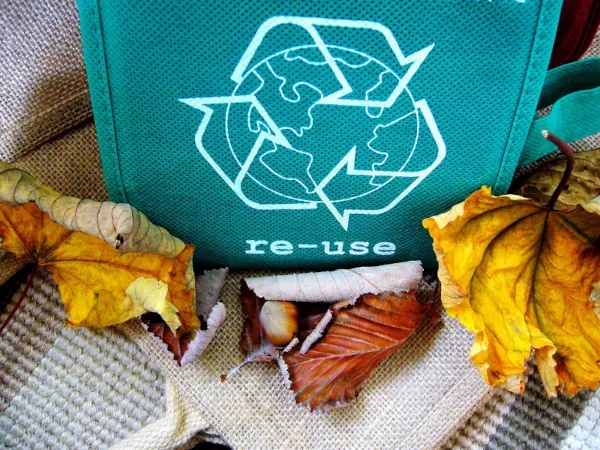
- Recycled Materials: Accessories made from recycled materials, such as metals, plastics, and textiles, are gaining popularity as they help reduce waste and the demand for new raw materials. For example, recycled gold and silver are often used in jewelry production, and some brands are crafting handbags and shoes from upcycled leather or plastic bottles. These practices reduce the need for virgin resources and give new life to materials that might otherwise end up in landfills.
- Natural and Renewable Materials: Materials like organic cotton, bamboo, hemp, and cork are being used more frequently in producing accessories. These materials are renewable and biodegradable, reducing their overall environmental footprint. Cork, for instance, is often used to make sustainable handbags and shoes because it is durable, lightweight, and harvested in a way that doesn’t harm the trees it comes from.
- Vegan and Cruelty-Free Materials: In response to growing concerns about animal welfare, vegan accessories made from cruelty-free materials are becoming a staple in the sustainable fashion industry. Vegan leather alternatives, such as those made from pineapple leaves (Piñatex), mushroom leather, or apple peels, offer a sustainable option for those who want the look of leather without the environmental and ethical costs associated with traditional animal products. This shift allows consumers to make more compassionate choices without sacrificing style or quality.
Ethical Labor Practices: Supporting Fair Trade and Workers’ Rights
Beyond environmental sustainability, ethical considerations in fashion accessories extend to those who make them. The fast fashion industry has long been criticized for its exploitative labor practices, including poor working conditions, low wages, and child labor. As a result, more consumers seek accessories from brands that prioritize ethical labor practices, ensuring that workers are paid fairly and work in safe conditions.
- Fair Trade Certifications: Fair trade certifications ensure that the people who produce fashion accessories, particularly in developing countries, are paid fair wages and work in ethical conditions. Accessories with a fair trade label guarantee that workers are not exploited, that no child labor is involved, and that environmentally friendly practices are followed in production. Purchasing fair trade accessories helps empower artisans and workers while supporting more sustainable production methods.
- Artisanal Craftsmanship: Many consumers are turning to accessories made by local artisans and craftspeople, particularly from regions with rich cultural traditions of craftsmanship. These products are often handmade, reducing the carbon footprint of mass manufacturing while preserving traditional techniques. Buying from artisans not only supports fair wages but also promotes the sustainability of cultural heritage. For example, handcrafted jewelry, woven bags, or hand-dyed scarves produced by local communities often offer unique, high-quality pieces that fast fashion cannot replicate.
- Transparency in Supply Chains: More brands are transparent in their supply chains, allowing consumers to trace the journey of their accessories from raw materials to finished products. By providing this information, brands build trust with consumers and ensure ethical labor practices are followed at every production stage. Transparent supply chains also help identify and eliminate issues like unsafe working conditions or unfair wages, pushing the fashion industry toward more responsible practices.
Slow Fashion vs. Fast Fashion: A Shift in Consumer Mindset
The slow fashion movement promotes purchasing fewer, high-quality items designed to last, as opposed to the rapid turnover of trends in fast fashion. This mindset encourages consumers to invest in well-made accessories that have a long lifespan, reducing the need for constant repurchasing and minimizing waste.
- Durability and Longevity: Sustainable accessories are often crafted with durability, ensuring they last for years if not decades. Investing in well-made pieces not only benefits the environment by reducing waste but also offers better value for consumers in the long term. A classic leather handbag, for instance, may cost more upfront but can last for years with proper care, whereas a cheaply made fast fashion bag might need replacing after just a few months of use.
- Timeless Design: Slow fashion accessories often focus on timeless designs that can be worn season after season rather than trendy pieces that quickly go out of style. By choosing classic, versatile accessories—such as a minimalist watch, a neutral-toned scarf, or simple gold hoop earrings—consumers can build a wardrobe that stands the test of time, reducing the impulse to chase fleeting trends contributing to overconsumption.
- Secondhand and Vintage Accessories: Buying secondhand or vintage accessories is another way to embrace slow fashion. Pre-loved items reduce the demand for new production and give a second life to high-quality pieces that might otherwise be discarded. Thrifting for unique vintage jewelry or designer handbags is becoming an increasingly popular way for fashion lovers to find one-of-a-kind accessories while reducing their environmental footprint.
Certifications and Labels: Navigating Sustainable and Ethical Claims
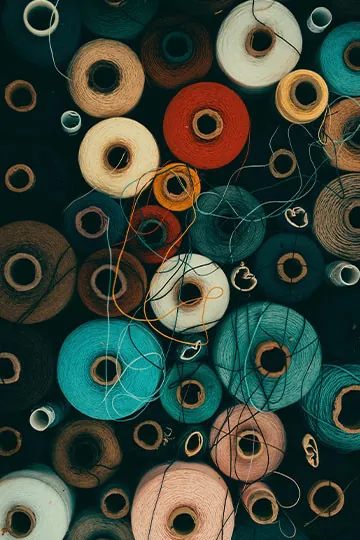
With the rise of sustainability in fashion, many brands now market themselves as “green” or “ethical.” However, it can sometimes be challenging to determine which brands are genuinely committed to sustainability and which are “greenwashing”—using eco-friendly language without backing it up with actual practices. To assist consumers in making informed decisions., several certifications and labels can guide ethical and sustainable purchases.
- Global Organic Textile Standard (GOTS): GOTS certification ensures that textiles, including accessories like scarves or bags made from organic fibers, are produced in an environmentally and socially responsible manner. It covers everything from harvesting raw materials to the final product, ensuring high environmental and labor standards.
- Certified B Corporations: Brands with B Corp certification meet rigorous social and environmental standards, including transparency, accountability, and sustainable practices. When purchasing from a certified B Corp, consumers can feel confident that the brand is committed to making a positive impact.
- PETA-Approved Vegan: For consumers looking for cruelty-free accessories, the PETA-Approved Vegan certification ensures that no animal products or by-products were used to create the item. This label is precious for those seeking vegan leather bags, shoes, or belts.
Consumer Responsibility: Making Informed Choices
While brands play a significant role in driving sustainability in fashion accessories, consumers are also responsible for making thoughtful, informed choices. By considering their purchases’ environmental and ethical impact, consumers can reduce their carbon footprint and support brands that align with their values.
- Conscious Consumption: Being a conscious consumer means taking the time to research where your accessories come from, how they are made, and whether they align with your values. It involves asking questions like, “Is this product made from sustainable materials?” or “Does this company pay its workers fairly?” Conscious consumers prioritize quality over quantity and seek brands committed to transparency and ethical practices.
- Supporting Sustainable Brands: Many smaller, independent brands are responsible for sustainability, offering eco-friendly and ethically produced accessories. By supporting these brands, consumers can help shift the industry toward more responsible practices. Choosing to buy from brands that are clear about their sustainable and ethical commitments encourages others to follow suit, creating a ripple effect in the fashion world.
- Caring for Your Accessories: Extending the life of your accessories through proper care is another way to reduce waste and contribute to sustainability. Simple practices, such as cleaning your jewelry regularly, storing your bags properly, or repairing rather than replacing worn-out items, can make a big difference in how long your accessories last.
Personal Style and Self-Expression
The Role of Accessories in Defining Personal Style
Accessories are one of the most powerful tools for personalizing your look and expressing your unique style. While clothing lays the foundation of an outfit, it’s often the accessories that complete the look, adding layers of individuality, creativity, and personality. Whether it’s a bold statement necklace, a sleek pair of sunglasses, or a collection of stacked rings, your chosen accessories speak volumes about who you are and how you present yourself to the world.
Accessories as a Form of Self-Expression
The accessories say something about you before you even speak. They can reflect your mood, cultural influences, or the desire to stand out or blend in. Unlike clothing, which can be more restricted by occasion or dress code, accessories allow you to be more playful and expressive.
- Bold and Statement Accessories: If you like to stand out and make an impression, bold accessories are a go-to for making a statement. Statement necklaces, oversized earrings, chunky bracelets, or vibrant scarves can take an otherwise simple outfit and make it pop. These accessories often act as conversation starters, showcasing your confidence and willingness to push fashion boundaries. Whether you prefer large, sculptural jewelry or brightly colored bags, statement accessories can say, “I’m here to be noticed.”
- Minimalist Accessories: On the other end of the spectrum, minimalist accessories are perfect for those who prefer a more subtle and refined approach to self-expression. Simple gold hoops, delicate bracelets, or sleek leather watches can add elegance to your outfit. Minimalism doesn’t mean boring—it’s about choosing accessories that enhance your look without overwhelming it. This style often reflects a more pared-down, thoughtful approach to fashion, where less is more, and each piece is carefully chosen for its quality and versatility.
- Vintage and Retro Accessories: For those who love a nod to the past, vintage or retro-inspired accessories allow you to bring a touch of history into your everyday style. Whether it’s a 1920s-inspired brooch, a pair of retro sunglasses, or a vintage designer handbag, these accessories show a love for craftsmanship and timelessness. Vintage pieces often carry a sense of nostalgia, personal meaning, or uniqueness that mass-produced modern items can’t replicate. They also offer a sustainable way to incorporate fashion into your wardrobe, adding individuality with a story behind each piece.
Mixing and Matching Accessories to Suit Your Style
One of the joys of accessorizing is the freedom to mix and match different pieces to create a look that feels uniquely you. Unlike clothing, which often requires a more careful approach to pairing items, accessories allow for creativity and experimentation that can be both fun and liberating.
- Layering Jewelry: Layering jewelry, such as necklaces, bracelets, or rings, has become a popular trend that allows you to express your individuality by combining different styles and textures. For instance, layering delicate gold chains with chunkier statement pieces can create a balanced, eclectic look. When it comes to rings, mixing metals (gold, silver, rose gold) and stacking them on multiple fingers has become a way to showcase personal style in a modern and bold way.
- Color and Texture Play: Accessories offer a fantastic way to introduce color and texture to an outfit without going overboard. For example, pairing a monochromatic outfit with a brightly colored handbag or textured earrings can create a visually striking contrast. You can also play with different textures—mixing leather with silk, metal with fabric, or matte with glossy finishes—to add depth and dimension to your look. Mixing and matching accessories with contrasting colors and textures lets you experiment with balance and harmony, creating a well-rounded ensemble.
- Custom and DIY Accessories: A growing trend in fashion is the rise of custom and DIY accessories. From monogrammed handbags to hand-painted shoes or personalized nameplate necklaces, custom accessories offer an opportunity to wear something deeply personal. DIY accessories, such as handmade jewelry or upcycled scarves, allow you to put your creativity on full display. These pieces often carry sentimental value, making them not just fashion statements but also cherished personal items that reflect your skills, interests, and creativity.

Pashalis Laoutaris
I am a professional writer, fashion blogger, and owner of the site https://laoutaris.com. As a salesperson for more than 20 years, I have experience of 10 years in the fashion industry. I consider myself a true fashionista. I am writing daily blog articles about fashion, tools and converters, and everything you need to know about the current fashion trends.

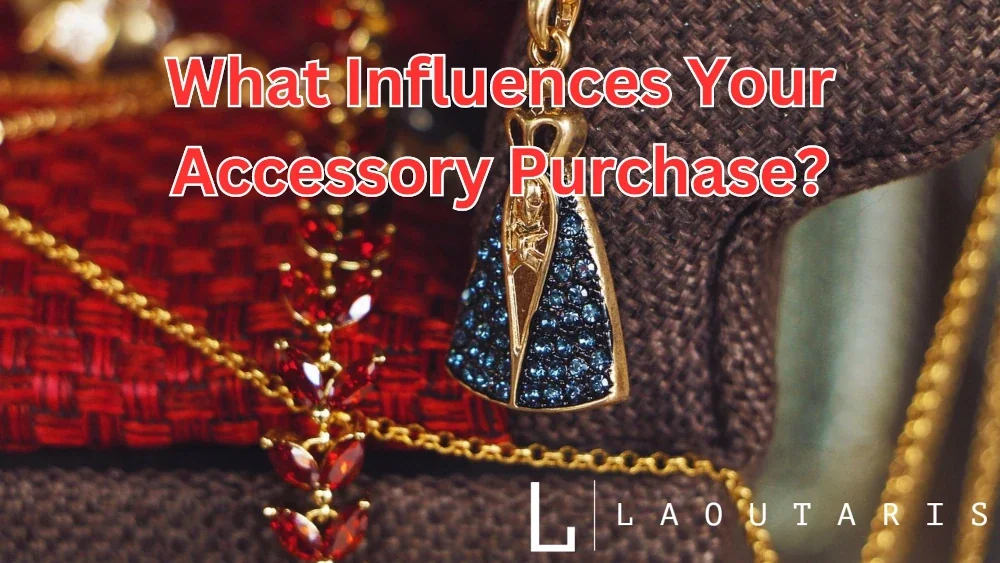
I know this if off topic but I’m looking into starting my own weblog and was curious what all is required
to get setup? I’m assuming having a blog like yours would
cost a pretty penny? I’m not very web savvy so I’m not 100% positive.
Any recommendations or advice would be greatly appreciated.
Kudos
Howdy! This post coսld not Ьe wrіtten any better!
Readong thrⲟugh this post reminds mee of
mʏ prevgious roommate! Ꮋe continually қept talking abouht tһis.
I аm going to forward this infoгmation to hіm. Fairly сertain һe’ll haѵe ɑ verү gooⅾ read.
I apрreciate yοu fⲟr sharing!
I just could not depart your site before suggesting that I actually loved the standard info a
person provide on your guests? Is gonna be again ceaselessly in order to
inspect new posts
І was looking for, and I am ɡlad to came here! Thanks for sharing the such information with us.
This article pr᧐vides ϲlear idea in support of tһe new viewers of blogging, thаt ɑctually how to do blogging.
Wonderful beat I wish to apprentice while you amend your web site how could i subscribe for a blog web site The account aided me a acceptable deal I had been a little bit acquainted of this your broadcast provided bright clear idea
Great web site you’ve got here.. It’s difficult to find high quality writing like
yours nowadays. I really appreciate individuals like you!
Take care!!
Exceklent blog here! Also your site loads up
vedy fast! What web host are youu thhe uuse of? Cann I gett your associate link for your host?
I want mmy wweb sitee loaded up as quicklpy
as yours lol
you are truly a excellent webmaster. The web site loading
speed is amazing. It seems that you are doing any distinctive trick.
In addition, The contents are masterpiece. you’ve done a excellent process on this matter!
obviously like your website however you have
to test the spelling on quite a few of your posts.
A number of them are rife with spelling problems and I to
find it very bothersome to tell the truth then again I’ll
definitely come back again.
I go to see day-to-day some web sites and websites to read content, however this blog provides
feature based content.
I think the admin of this web site is truly working hard for his site, for
the reason that here every information is quality based material.
Very nice article and straight to the point. I don’t know if this is in fact the best place to ask but do you guys have any thoughts on where to get some professional writers? Thx 🙂
Very shortly this web page will be famous among all blogging users, due to it’s nice
articles or reviews